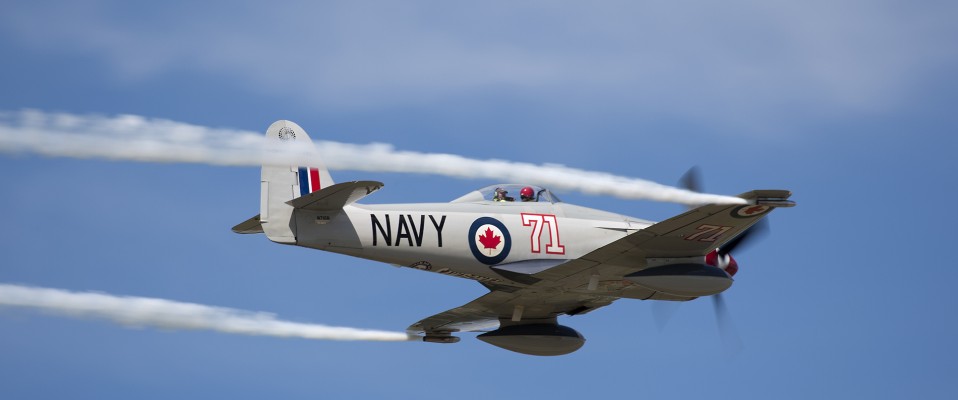Sawbones, Hawker Sea Fury N71GB
Life in the Fast Lane
Welcome to the fast lane!
Article by Jeremy D. Dando
Photos by Jeremy D. Dando (unless noted)
September 7, 2016
One of the great aircraft that resides at Anoka-Blaine airport (KANE) is the Hawker Sea Fury, N71GB, aka SAWBONES. I had the opportunity to chat with the aircraft’s owner Dr. Robin Crandall and the aircraft’s race pilot, USAF Colonel (retired) Curtis L. Brown.
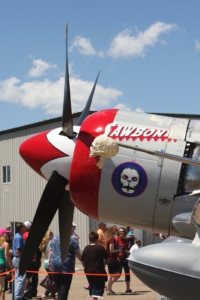 Besides being a fabulous looking warbird it is also Minnesota’s only Reno Unlimited air-racer. This aircraft has a interesting and worldly history. Originally built in 1949 it was delivered to the Iraqi Air Force in 1953 as a straight wing model. It was recovered from Iraq in 1979 and spent a few years in Florida sun. The engine was changed out and a set of folding wings were mated with the fuselage. In 2007 Dr. Crandall acquired the plane from one of the major warbird dealers in the the Midwest. One just does not jump into a 2500 horsepower, five ton taildragger and take it for a spin around the patch. In order to fly a Sea Fury one needs to get a special endorsement on one’s pilot licensee. The challenge is finding a dual control model of the aircraft! If you think 1940’s aircraft are rare try locating dual control/trainer models. Dr. Crandall was able to start his training in the Sea Fury “Cottonmouth” and was well on his way to getting the required flight time. Unfortunately another pilot had an incident with “Cottonmouth” making it unavailable for training. After some negotiation with the FAA Dr. Crandall completed his training in the twin control P-51 Mustang, “Lady Jo”.
Besides being a fabulous looking warbird it is also Minnesota’s only Reno Unlimited air-racer. This aircraft has a interesting and worldly history. Originally built in 1949 it was delivered to the Iraqi Air Force in 1953 as a straight wing model. It was recovered from Iraq in 1979 and spent a few years in Florida sun. The engine was changed out and a set of folding wings were mated with the fuselage. In 2007 Dr. Crandall acquired the plane from one of the major warbird dealers in the the Midwest. One just does not jump into a 2500 horsepower, five ton taildragger and take it for a spin around the patch. In order to fly a Sea Fury one needs to get a special endorsement on one’s pilot licensee. The challenge is finding a dual control model of the aircraft! If you think 1940’s aircraft are rare try locating dual control/trainer models. Dr. Crandall was able to start his training in the Sea Fury “Cottonmouth” and was well on his way to getting the required flight time. Unfortunately another pilot had an incident with “Cottonmouth” making it unavailable for training. After some negotiation with the FAA Dr. Crandall completed his training in the twin control P-51 Mustang, “Lady Jo”.
After nearly three years of ownership Dr. Crandall finally got the endorsement on his pilot’s license and the green light from the FAA. Sawbones was in the air and showing up many of the local fly-ins and airshows with Dr. Crandall at the controls.
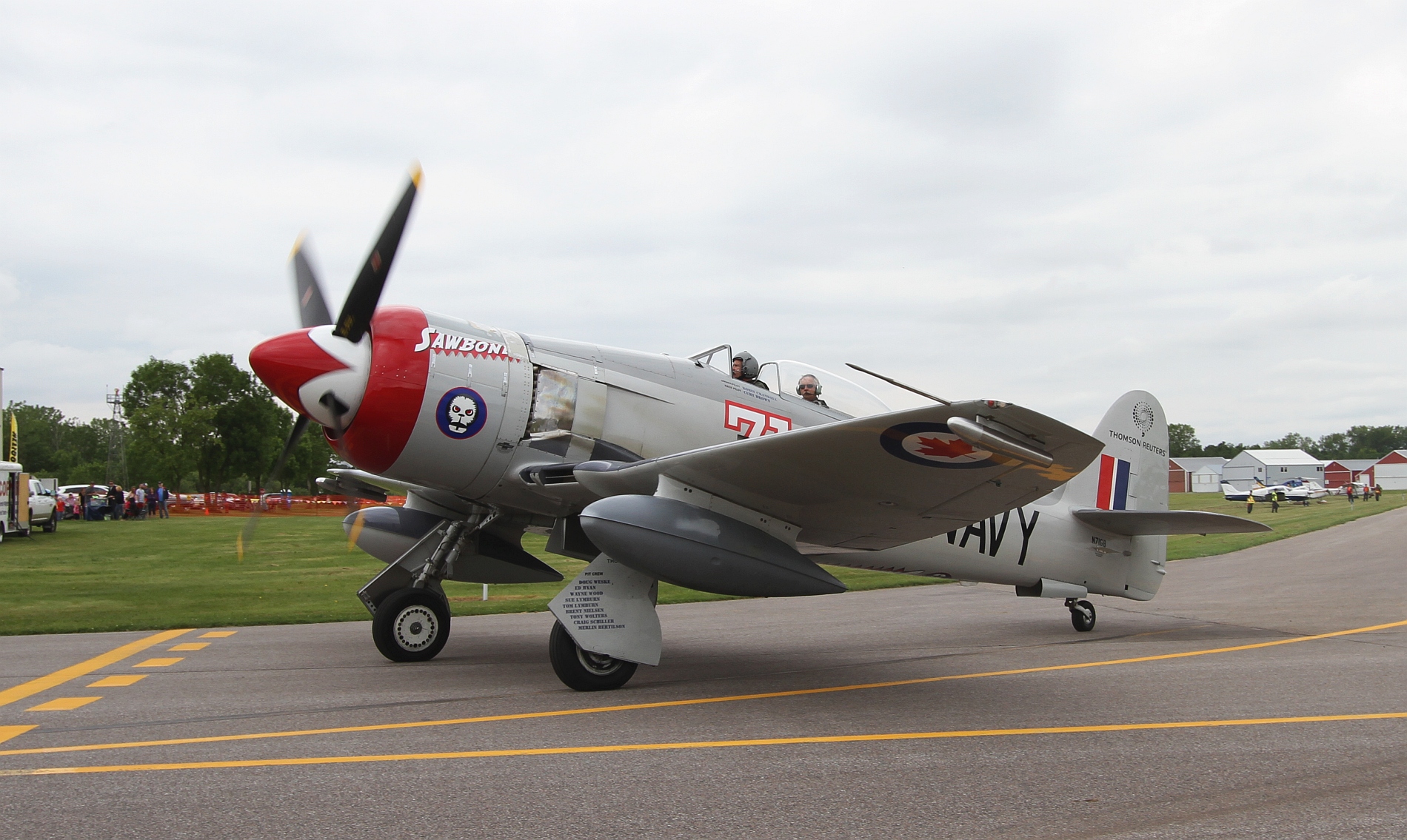
Facts, figures and go fast parts
I was able to spend some time with Dr. Crandall walking around “SAWBONES”. My first question had to be about the name. Well Dr. Crandall is an orthopedic surgeon so the name just seemed to fit. Unlike most of the unlimited racers, Sawbones is relatively stock. No clipped wings or stabilizers here. The Hawker Sea Fury is a 3rd generation propellor driven fighter plane. Manufactured just after WW II it may represent the pinnacle of propellor driven aircraft. Many people are enamored with the speed and power of the P-51 Mustang, however a stock Sea Fury is nearly 100 mph faster than a stock Mustang. The war time era was a decade of tremendous advancements in engines, aerodynamics and aviation fuel. The first thing most people notice about the Sea Fury is the big propeller and spinner. All the Sea Fury purists notice that SAWBONES is sporting a 4-bladed propeller rather than the stock five bladed version. SAWBONES is spinning a 13’ 6” diameter four bladed propellor which is mated to a Curtiss Wright R3350-26 engine. The sleeve valve Bristol Centaurus engine was replaced with the Curtiss Wright engine of similar displacement. The general consensus is that the reliability, availability and durability of the R3350 makes it the popular replacement engine for the rare and complex sleeve valve Bristol Centaurus.

Walking around the plane one gets a good feeling for the size and mass of this tail dragger. Not many taildraggers have a thirty eight foot wingspan and weigh in at over 10,000 pounds. Dr. Crandall was kind enough to show me the trick to getting into the cockpit and I soon found myself getting my hands on the controls of this 2500 horsepower behemoth. I resisted making engine noises, but could not suppress a “Tim Allen grunt” as we talked about the controls and gauges. The cockpit was roomy, however the tall sides made it seem it was tighter than it actually was.
The gauge layout is fairly standard of the era, there are only a few additions of; chip detectors, GPS and updated radio. One of the key gauges for this plane’s engine management is monitoring the oil temperature. Too hot and it is a sign that something is amiss and you better back out of the throttle or risk melting down an engine and landing the plane as a glider!
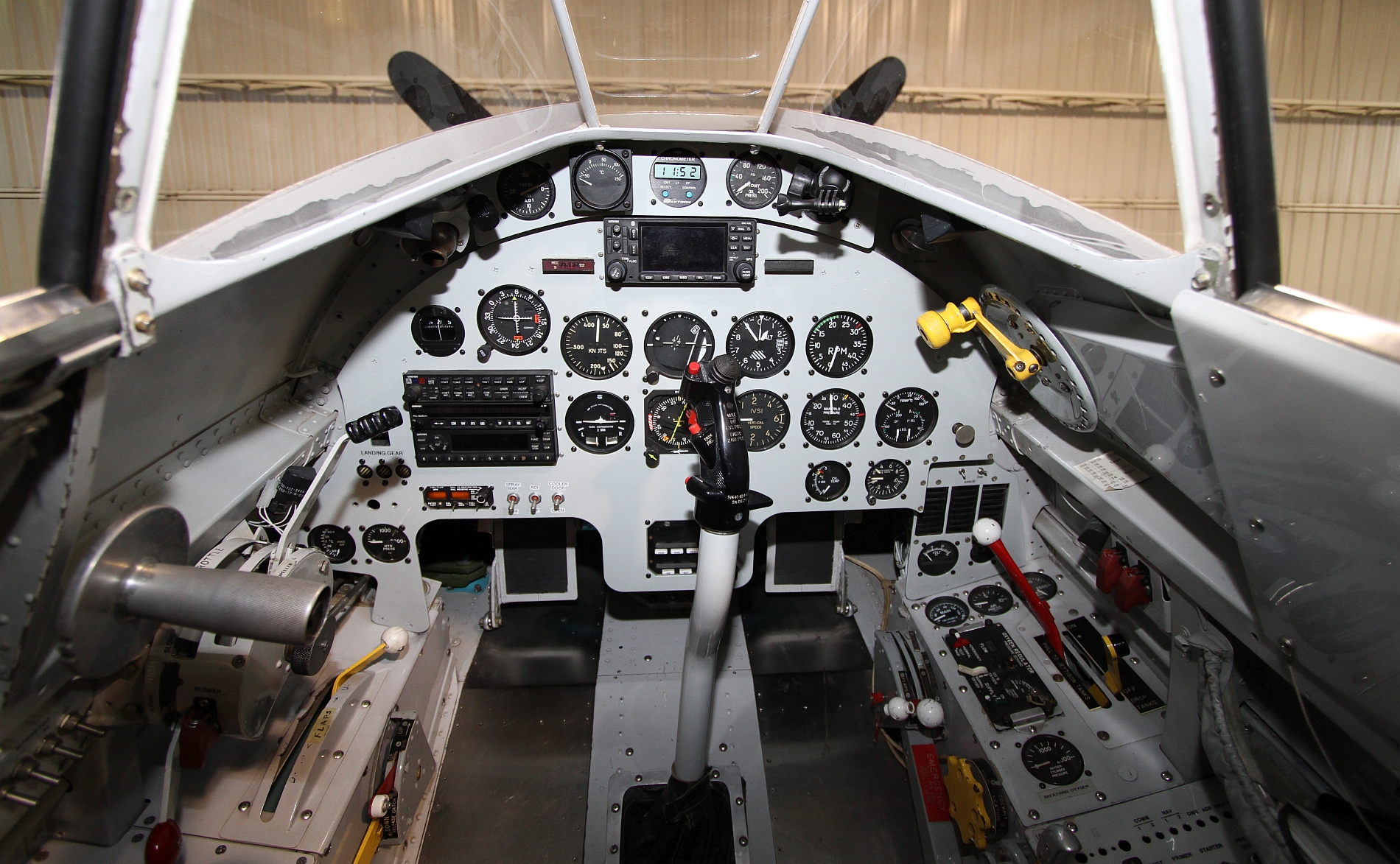
After extracting myself from the cockpit our walk around continued. I notice there were no exposed rivet heads on the wings and fuselage. The wings have been skinned and there was a bit of bondo on the fuselage. From the front you get an idea that this is not an aerodynamically clean plane. The big 18 cylinder radial presents a large cross-section that has to get punched through the air. Also there are several gaping maws for oil coolers and the engine air intake. Looking at the wing mounted oil cooler one notices the installation of a spray bar on the inlet side of oil cooler. During racing distilled water is sprayed onto the oil cooler to increase the efficiency of the oil cooler. Water has a much higher heat capacity than air and when liquid water is turned into steam it removes additional heat from the hot oil.
The landing gear is stock, it has a wide footprint and it’s design is supposedly modelled after that of a German Focke-Wulf Fw-190 that was captured during the war. An unexpected observation was that it rides on radial tires. Talking with Dr. Crandall he mentioned the stock bias ply tires have been replaced in favor of newer technology radials. Further discussion revealed that these are actually the same tires used on the nose wheels of an Airbus A320.
As Dr. Crandall and I concluded our walk around, the support crew of SAWBONES had began to gather. The team has a weekly meeting all year round, focusing on what needs to be done to get Sawbones to the local airshows and out to Reno. The team is an all volunteer crew. They come from varied backgrounds and bring a wealth of knowledge and experience with them.

The following week I was able to sit down with SAWBONES race pilot, Colonel Curtis Brown.
Clad in jeans and a SAWBONES t-shirt Curt Brown looked like most other pilots at airport. None however, have his resume; Air Force Academy graduate, test pilot for the Air Force, NASA astronaut, Space Shuttle pilot/commander and 737 commercial pilot. Our talk would focus on what it was like flying SAWBONES at it’s limit in what Curt best described as “non-cooperative formation flying”. It sounded something like my commute to work, except they are doing it a few hundred feet in the air, at 400+mph, in one-of-a-kind 70 year old aircraft.
The Reno Air Races are a unique event. They are the fastest piston engine sport in the world. The unlimited air-racers get top billing, but there are other classes including; Sport, Formula1, Bi-planes, T-6 and Jet. For 2015 there were 122 pilots entered and for 2016 there are 136 entries. Although the name of the class is “unlimited”, there are a few limits (rules); aircraft must be powered by piston engines, prop-driven, weigh at least 4500 lbs. and be capable of pulling 6 g‘s. Other than that it is up to your imagination, engineering and bank account.
The logistics involved for getting to Reno are a bit complicated. All race aircraft must arrive by Sunday of race week, so the team sends a semi truck with spares and team items along the roads and the aircraft flies from Blaine, MN to Reno NV. A distance of about 1700 miles. The plane has drop tanks which allow for a one-stop flight. Typically Curt will fly out with Crew Chief Doug Weske in the jump seat. I did not get the chance to shoehorn myself into the jumpseat, but it looks a bit cramped and not the place I wanted to spend 2-3 hours in! The importance of have the crew chief with the plane is that if there is an issue, they can get the aircraft on the ground and start troubleshooting and problem solving immediately.
Once in Reno the plane gets handed to the race pilot and preparation begins. The 100 gallon drop tanks come off, and Curt flies some easy laps to burn of the 100 octane low lead. Racing is done with the 145 octane fuel. The ADI tank is filled with 19 gallons of water/methanol mix. The oil cooler-spray bar tank is filled with 30 gallons of distilled water. The oil tank is topped off to 30 gallons. The aircraft is cleaned and checked for any leaks and it time to go racing!
Whether you are an Olympian, aerobatic pilot or Reno Air Racer they seem to share similar pre-race focusing/visualization procedures. Curt has a specific pre-race procedure. He likes to get in, strap in, and then spend time focusing and visualizing the race. He likes to “fly the first two laps in his head”. This helps to avoid any surprises and have contingencies for all events that could occur. For racing Curt will be breathing 100% oxygen. The altitude at Reno is 5000’ above sea level, but using oxygen gives you more reserve if there would be smoke in the cockpit.
Qualifying speeds are typically faster than race speed since you have the course to yourself and pick the best line. Last year Curt flew Sawbones at 417 mph to qualify in 5th place. During this 1 minute 9 seconds Sawbones and Curt covered the 8.1 mile course expertly and efficiently. He experiences 4-5 G in the turns, banking up to 90 degrees all while 50-250’ above the ground.
What is it like to fly a qualifying lap or a race? “It’s loud, really loud”. I guess it would be, 3350 cubic inches of displacement, 18 cylinders, 45” of manifold pressure, with 6” straight stacks, loud might be an understatement!
Race week continues with the heat races and then if you are fast enough the “Silver” and “Gold” races. Heat races will have 5-7 racers and be 6 laps long. The “Silver” race will have 7 laps and “Gold” race is 8 laps. With six planes and one ideal line around the racecourse there is a lot of maneuvering and flying a slower line. Just as two planes can not occupy the same physical space, a racer does not want to encounter the turbulence created by the leading aircraft. This turbulence “can flip you upside down and push you towards the ground”. This is where experience, knowledge and a keen eye will keep you out of trouble. Although one can not see turbulence, you can see the aircraft, its engine exhaust and vapor trails from the spray bars and boil-off cooling systems. All these bits of information help keep you fast and out of trouble. One other bit of information Curt mentioned is that you typically do not pass on the inside of another competitor. This is the “blind spot”, that occurs when turning and banking at 60-90°.
Curt flew SAWBONES efficiently and fast all week in 2015. They qualified 5th for “Gold” race and managed to finish in fourth, only 6 seconds behind the third place finisher.
What will 2016 bring? Well, the Sawbones team has been preparing since winter in Minnesota. A new spinner was designed and fabricated. It was fitted and test flown in August. Will this find the 5-10 mph Sawbones needs to take a third place finish? We will have to wait till September to find out.
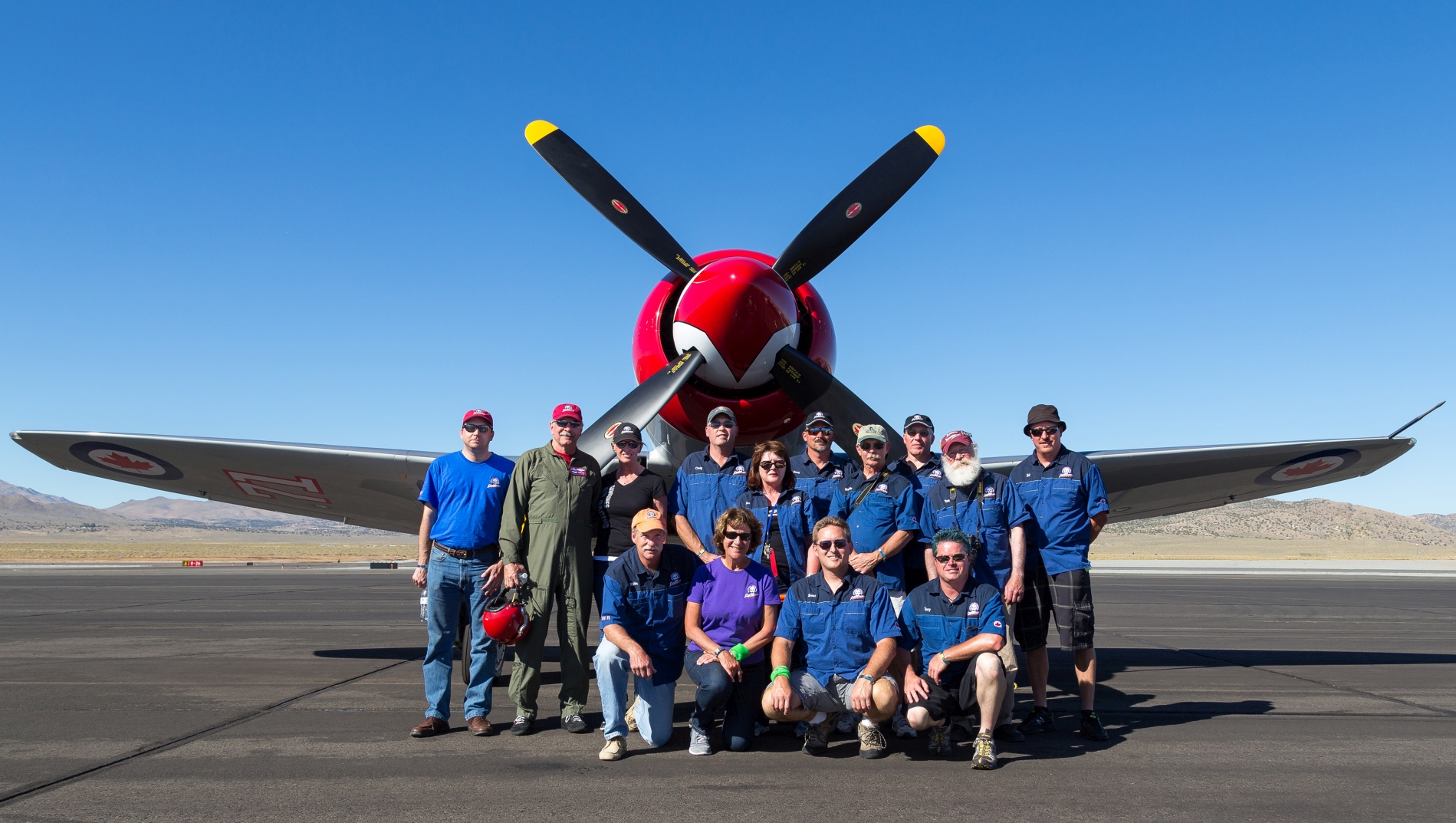
2015 Team Photo: Photo by Emmanuel Canaan
You can follow all the going ons at the Reno Championship air race at: http://airrace.org/
The SAWBONES website is http://www.sawbonesair.com , their Facebook page is https://www.facebook.com/Sawbones-Air-181184835272127/?fref=ts

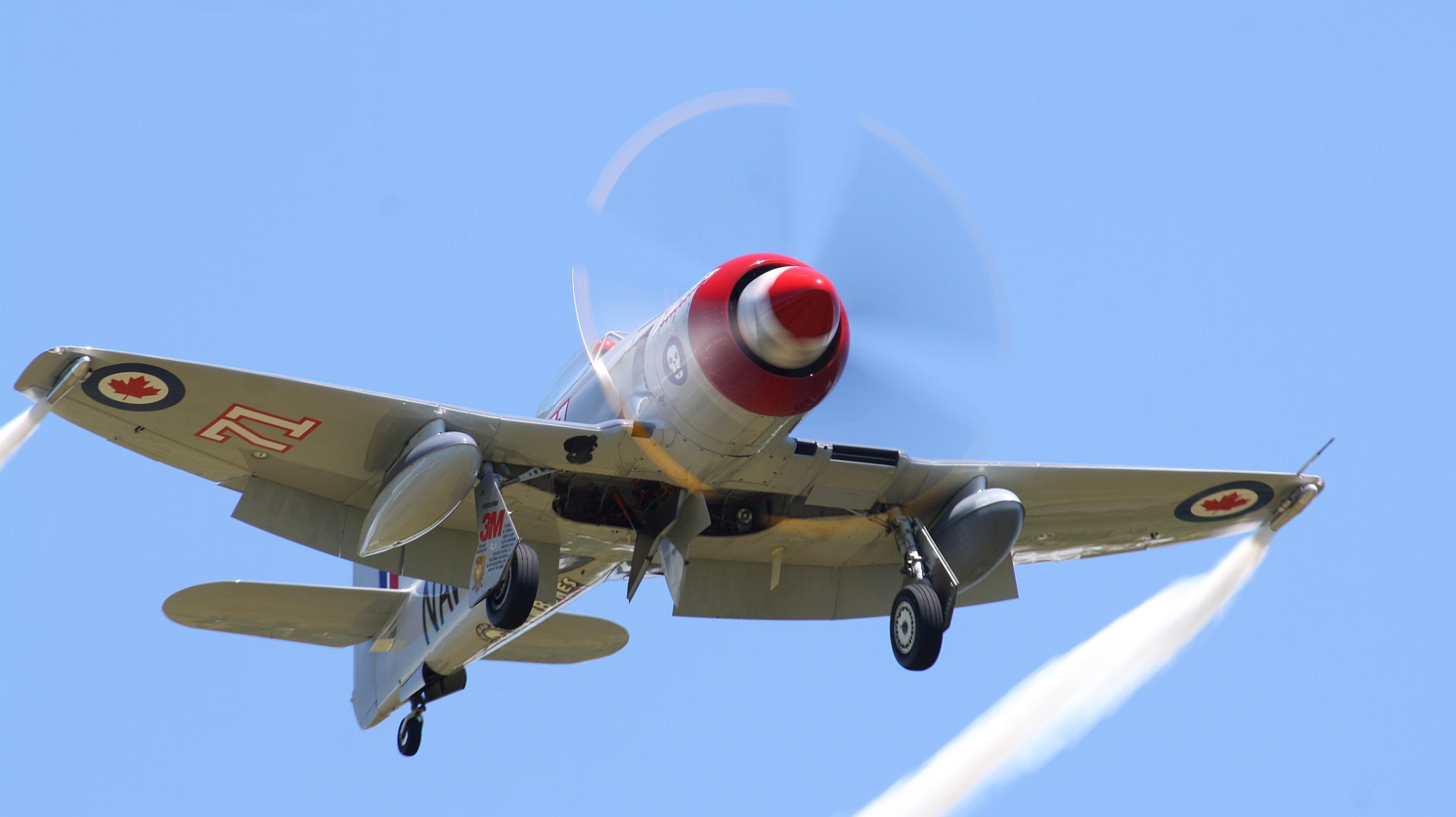

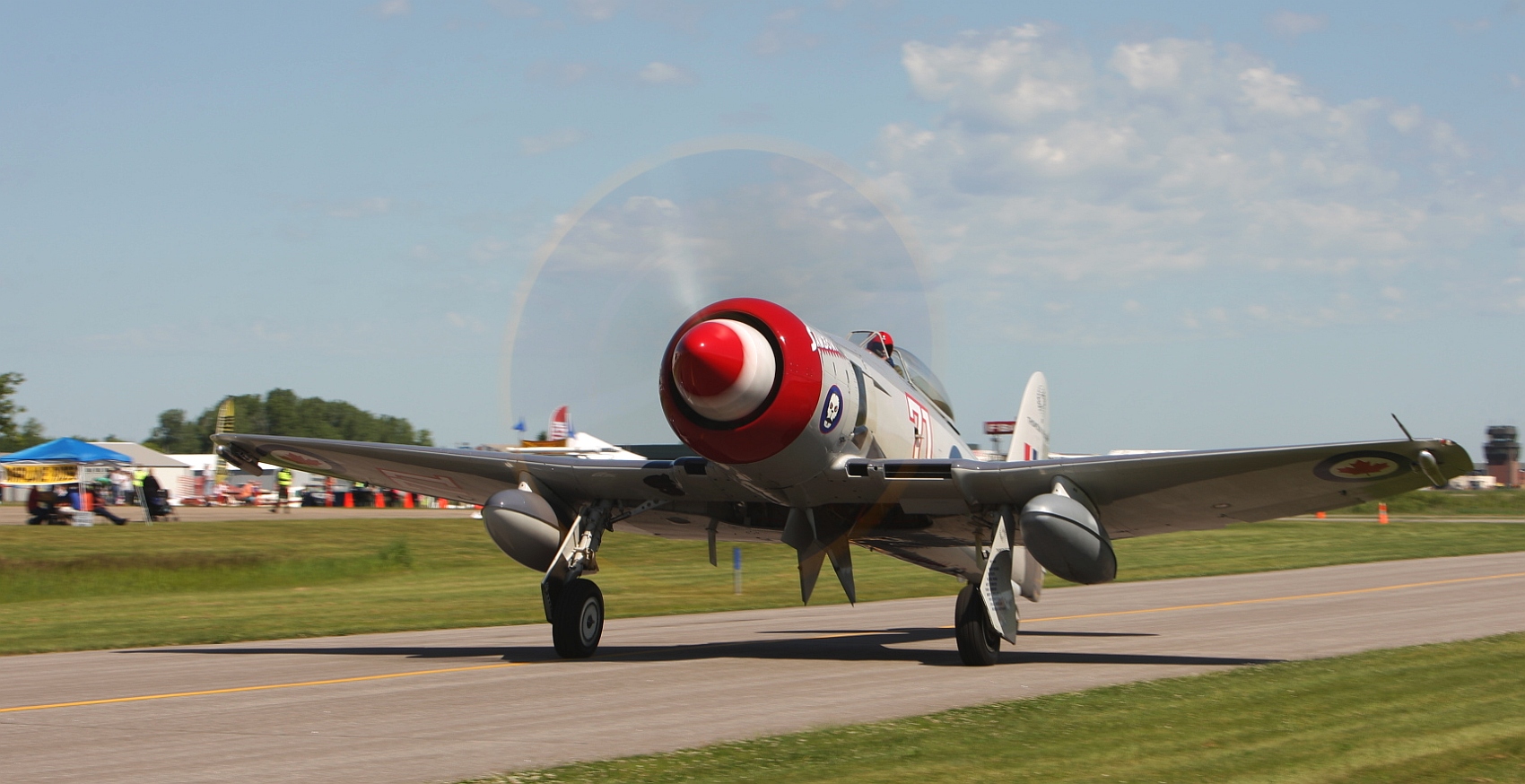
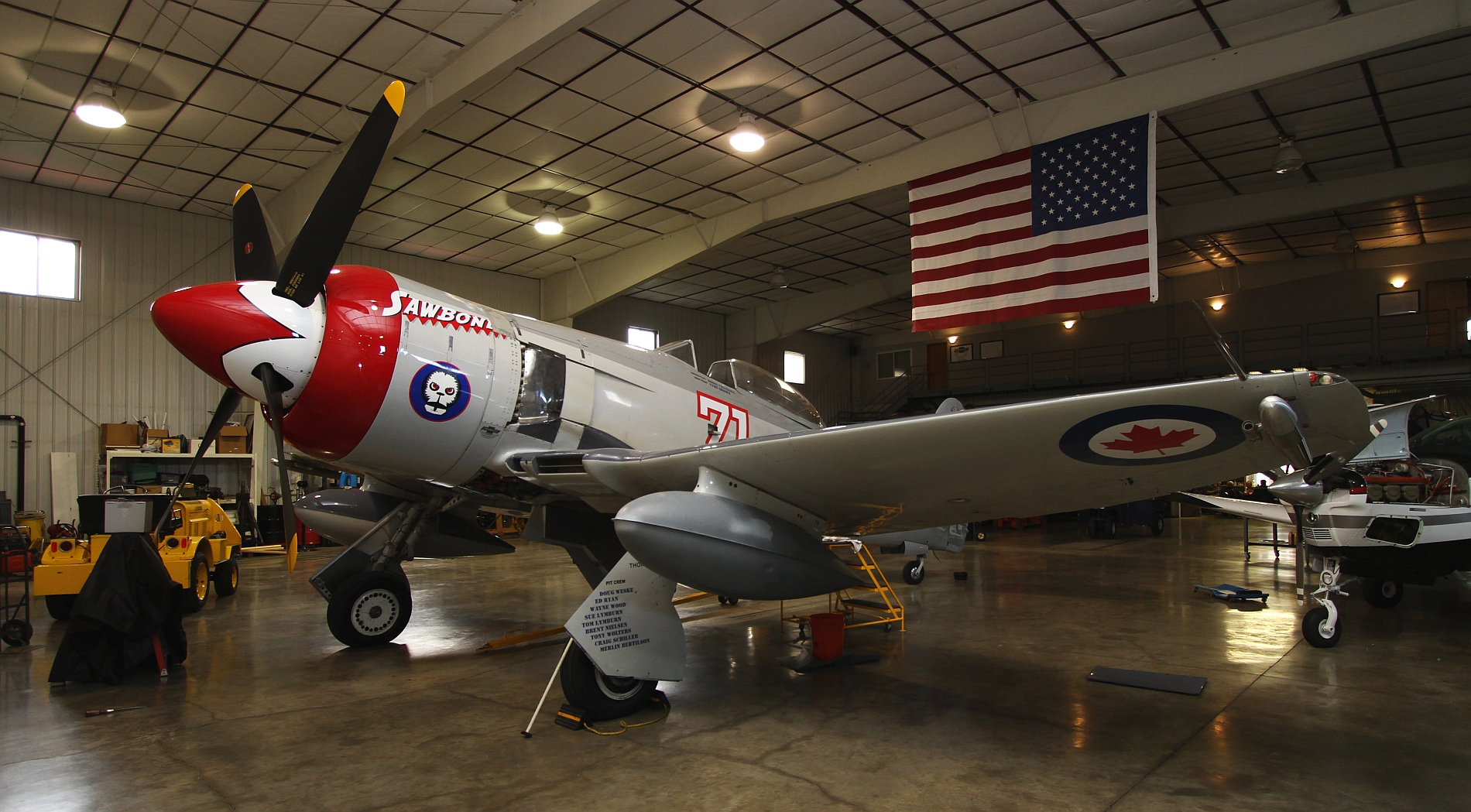
Jeremy D. Dando is an aviation photographer/writer based in Minneapolis, Minnesota. He holds a bachelors degree in Chemical Engineering and works as a Research and Development engineer designing new devices for the treatment of atrial fibrillation. Aviation photography allows him to combine his technical and creative sides to create an image which captures a moment in time and tells a story to the viewer. He has travelled worldwide photographing commercial and general aviation aircraft. Jeremy’s love of aviation and travel started early in life with family vacations to Europe and Florida. Now Jeremy spends his free time chasing things that fly and working with a local aviation restoration group to return a WWII aircraft back to flight worthy status. Jeremy’s photographic work has been used in corporate publications, magazines, calendars, websites and news articles. Jeremy uses Canon photographic equipment.
Jeremy can be reached at: [email protected]


